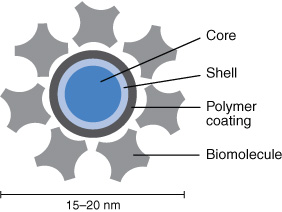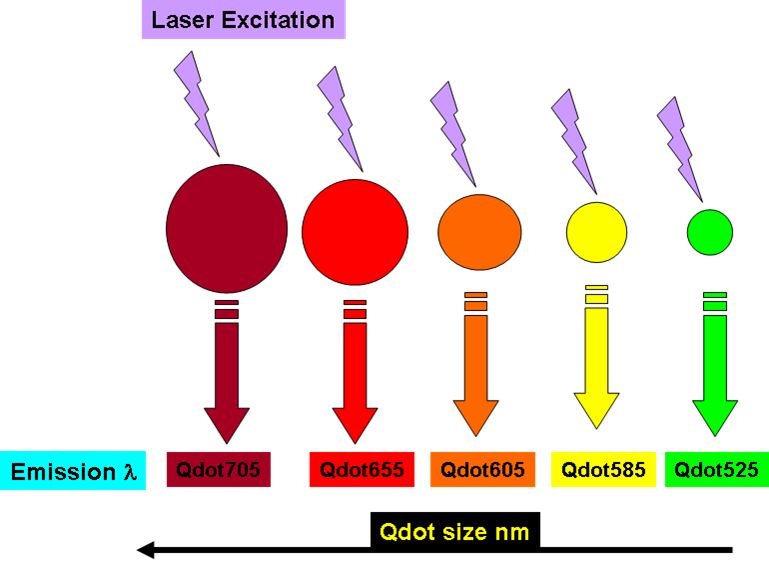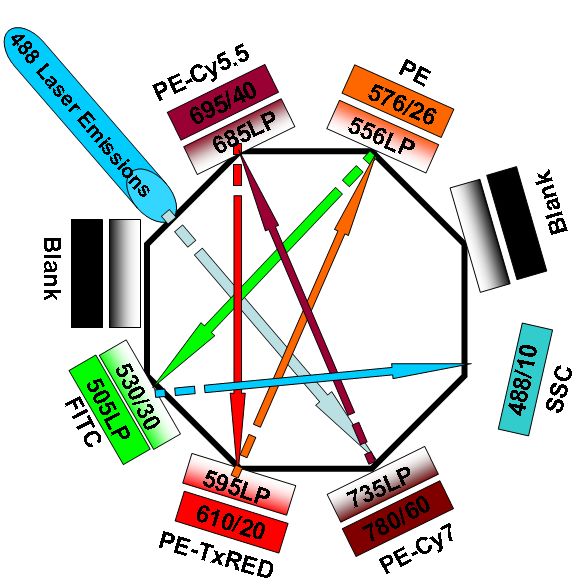Qdots and Fluorescence
Quantum Dots or Qdot nanocrystals in principle have similar fluorescent properties to the traditional organic based fluorescent dyes commonly in use today. Qdots are the size of proteins (up to a few thousand molecules) at 10-20nm diameter and are made up of a semiconductor core, (cadmium with selenium or tellurium) and a shell of zinc sulphide that improves the optical properties of the qdot. The Qdot also has a polymer coating and a layer of biomolecules, see figure below.

Fluorescence generated from previous known sources arises after excitation with a light source resulting in an electronic transition or emission of light (fluorescence) at a higher wavelength than the excitation source. Qdots generate their fluorescence in different manner in that the core and shell form excitons, which is analogous to the excited state of a fluorophore. These excitons have a much longer lifetime than normally generated fluorescence, the by-product of which makes the Qdot virtually non-photo bleachable and hence is ideal for detecting low density antigens. The size of the Qdot is proportional to the energy of the excitons within it, the larger the Qdot the longer the wavelength of the fluorescence emitted.

Unlike most fluorochromes that have skewed emission profiles with longer tails at the higher wavelength and thus overlap with other fluorochromes, Qdots have an almost normal distribution of fluorescence and hence require less electronic compensation between the various Qdots.
Qdots at ICMS
The instruments available at the ICMS core facility allow some of the Qdots to be used in flow cytometry. These include Qdot 525, 585, 605, 655, 705, 800 the number refers to the emission peak of the Qdot. All Qdots are maximally excited by short wavelength lasers such as UV or Violet diodes (405nm) and so any three can used on the FACS Aria.
A full list of applications is given by Invitrogen in the following pdf.

